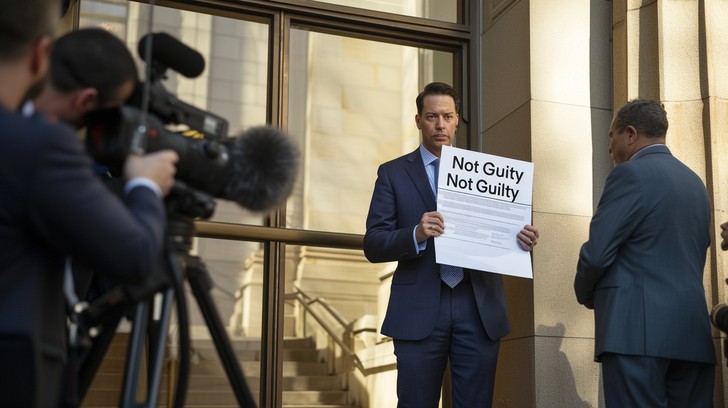Now Reading: IBC (AMENDMENT) ORDINANCE, 2020: MORE MISSES & LESS HITS?
-
01
IBC (AMENDMENT) ORDINANCE, 2020: MORE MISSES & LESS HITS?

IBC (AMENDMENT) ORDINANCE, 2020: MORE MISSES & LESS HITS?
The President of India on 05.06.2020 gave assent for the promulgation of the Insolvency & Bankruptcy Code (Amendment) Ordinance, 2020 (“Ordinance”). The Ordinance has been brought in force to protect the fragility of businesses of various Corporate Debtors encountering an unprecedented financial slow down amidst the Covid-19 pandemic. The Ordinance mandates the insertion of Section 10A and Section 66(3) in the Insolvency & Bankruptcy Code, 2016 (“Code”).
- Section 10(A)
The newly inserted Section 10A states as follows:
“10A. Notwithstanding anything contained in Sections 7, 9 and 10, no application for initiation of corporate insolvency resolution process of a corporate debtor shall be filed, for any default arising on or after 25th March, 2020 for a period of six months or such further period, not exceeding one year from such date, as may be notified in this behalf:
Provided that no application shall ever be filed for initiation of corporate insolvency resolution process of a corporate debtor for the said default occurring during the said period.
Explanation.- For the removal of doubts, it is hereby clarified that the provisions of this section shall not apply to any default committed under the said sections before 25th March, 2020.”
The Ordinance makes it sufficiently clear that pursuant to the said amendment no application pertaining to the initiation of the Corporate Insolvency Resolution Process (“CIRP”) shall be initiated with respect to Section 7, 9 and 10 of the Code on or after 25th March, 2020 or on such date as may be notified for a period of 6 (Six) months that may extend to 1 (One) year. Additionally, the said suspension is not applicable to defaults occurring prior to 25th March,2020.
The Ordinance however has paved way to a series of novel ambiguities leaving various stakeholders anxiously waiting for an even more immediate judicial intervention than what it had initially aimed to avoid.
- The Curious Case of ‘such date’
The amendment provision i.e Section 10A of the Code states that no application for initiation of corporate insolvency resolution process of a corporate debtor shall be filed, for any default arising on or after 25th March, 2020 for a period of six months or such further period, not exceeding one year from such date, as may be notified in this behalf. Therefore, the Ordinance aims to establish an indiscriminate disallowance of application for CIRP for a period ranging form 6 (Six) months to 1 (One) year on or after 25th March, 2020 or on such other date. The determination of the usage of ‘such date’ in the said provision poses interpretational challenges and might see an interference by the Adjudicating Authority (“AA”) in no time. It would be an interesting phenomenon to witness which other date does the AA ascertains to be the cut off date despite having one clearly being provided in the Ordinance. A possible argument in order to debunk and further put to rest such doubts can also be provided that ‘such date’ has been referred to as a subsequent reaffirmation to no other date but to 25th March, 2020 itself. But, the possibilities of any other date being notified in the near future are also wide open.
- The extremity with the usage of ‘ever’
The proviso to Section 10A provides that the default occurring in the said period shall not be made accountable and no application for CIRP shall ever be filed in this respect. The challenges that a situation as peculiar as this possesses is that the proviso is silent in case of a continuing default, i.e. a scenario where the default that took place on or after 25th of March,2020 but continued beyond the said period of protection. A valid argument could also be made out in case of Non-Convertible Debentures or other bonds that may have fallen due on 25th March,2020. In a situation like this a Corporate Debtor may conveniently choose not to pay the debenture holders in the garb of the protection being offered by the Ordinance. Another instance such as the one where the part default occurs prior to 25th March 2020 but meets the threshold of CIRP i.e Rs 1 Cr only on or after the said date. It is pertinent to note that the Hon’ble NCLAT in Exim Bank Vs. RP, JEKL held that claims in respect of all debts, whether matured, in default or not. Therefore, the usage of the word ‘ever’ creates a finality like situation leaving the stakeholders inadvertently baffled in the wake of the Ordinance.
- Unwarranted Suspension of Section 10 of the Code
Despite of its fair share of ambiguities the Ordinance may seem to few a welcome move in terms of protecting businesses from the hostilities of financial and operational creditors. However, the suspension of Section 10 of the Code needs to be fairly analysed. Section 10 of the Code vests the responsibility in the hands of the Corporate Debtor or its Corporate Applicant to themselves approach the AA in case it commits a default. In a novel situation like the present pandemic there might be instances that occurrence of defaults may become inevitable as the profitability and running of various enterprises has taken a significant hit. Hence, as a result of the same a Corporate Debtor on its own inhibition would desire turning a new leaf by initiating the process to revive and subsequently rehabilitate its business. However, the same has been actively and legally curbed by suspension of Section 10 by way of the Ordinance. Therefore, the inclusion of Section 10 of the Code in the Ordinance may be unwarranted considering the present setting.
- Resolution Applicants feeling left out
While the Ordinance may have come as a sigh of relief for the dismayed Corporate Debtors it seems to have been completely inconsiderate towards the plight of the Resolution Applicants. The adversities of the pandemic have negatively impacted various Resolution Applicants and therefore it wouldn’t be an unheard situation where the Resolution Applicant might want a withdrawal or a favourable revision in the plan that it had to offer prior to the pandemic. The Ordinance sadly does not give any such respite to the Resolution Applicants.
- Section 66(3)
The Ordinance also directs insertion of a subsequent (3) to the presently existing Section 66 of the Code which deals with fraudulent and wrongful trading, i.e. transaction committed by the Corporate Debtor to defraud the creditors. Section 66(3) reads as under:
“(3) Notwithstanding anything contained in this section, no application shall be filed by a resolution professional under sub- section (2), in respect of such default against which initiation of corporate insolvency resolution process is suspended as per section 10A”
The aforesaid provision prohibits filing of any such application by the Resolution Professional during the protection period mandated by the Ordinance thereby giving unbridled power in the hands of the directors and partners of the Corporate Debtor. The insertion raises two very valid queries such as firstly, whether this gives the Corporate Debtors a free hand to carry out fraudulent activities against the creditors and exploit them and secondly are the Resolution Professionals expected to turn a blind eye towards the said illegalities, if committed?
Conclusion
On one hand where the Ordinance was a much-anticipated step in order to de-stress businesses and unclog the judiciary, its significant interpretational challenges renders it ambiguous and vague in nature. The Ordinance clearly takes away more than it has to offer and a clarification or judicial intervention ensuing it is the next among the many other things that the perplexed stakeholders await anxiously amidst the Covid-19 crisis. The Ordinance finds the balance of convenience grossly misplaced and cradles the Corporate Debtors at the cost of the creditors which goes against the core essence of the Code. Perhaps, it could also be safely said that an ordinance mandating restriction based on initiation of claim and not on initiation of CIRP and a comprehensive definition of pandemic specific ‘default’ would have definitely gone a long way and would have acted as a much need morale booster for those affected.

Adv. Kritya Sinha
Ms. Kritya Sinha is an Advocate practising in New Delhi, India. Her areas of practise primarily includes Corporate and Commercial Laws.










